PRODUCTS
Frost
for GLASS
Matte surfaces of glass have a shine, like frost on glass, and a delicate textured feel.
Frost
It is common practice to treat cosmetic glass bottles by
frost processing, using a
fluorine compound
to etch glass surfaces
( although some frosted glass is produced by sandblasting* ).
The microscopically rough surface alters the appearance
and feel of the glass. Frost
processing is also used as
pretreatment for good paint adhesion.
The texture of paint (gloss/matte finish) is not affected
by frosted bottle surfaces.
* Sandblasting involves blasting sand or other abrasive materials
against the workpiece surface.
General frosting
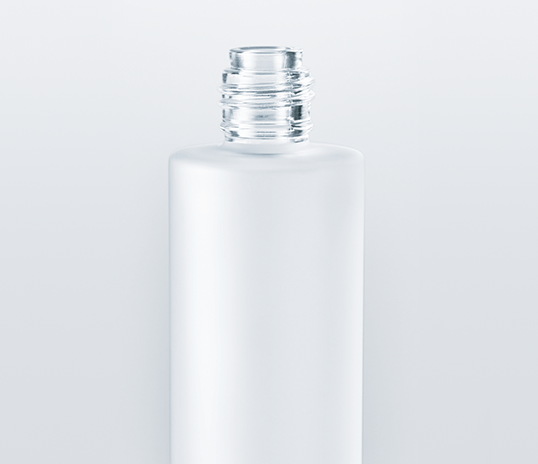
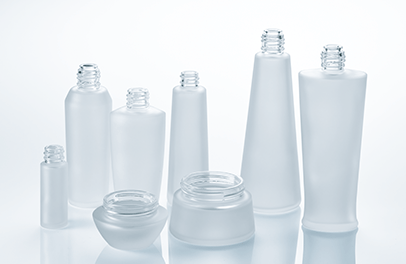
Plastic bottles and cream jars can also be given a frosted look by a paint or transfer process.
Other Frosting Effects
Imbricated Process Frost
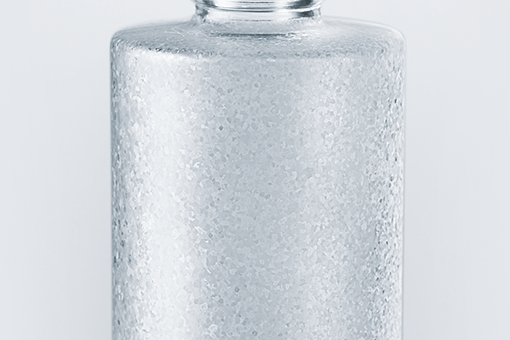
The fish scale-like pattern of imbricated process frost gives a luxury shine and texture to the bottle.
Special Frost
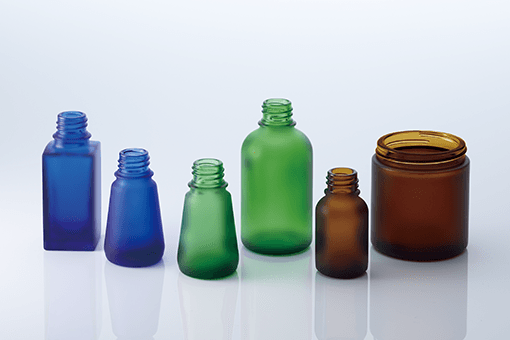
Frost for colored glass bottles
Fingerprints are inevitably deposited on surfaces treated by ordinary frosting process. Special frost makes the glass surface less susceptible to fingerprints.
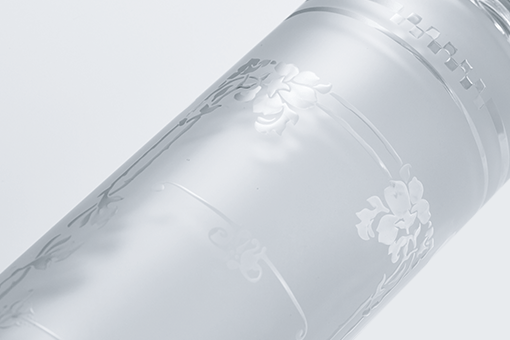
To bring clarity back to the matte surface of a frosted bottle, print a desired image with a paint or medium*.
* The medium is a colorless clear ink, whic is often used to thin pigments.
Case Study
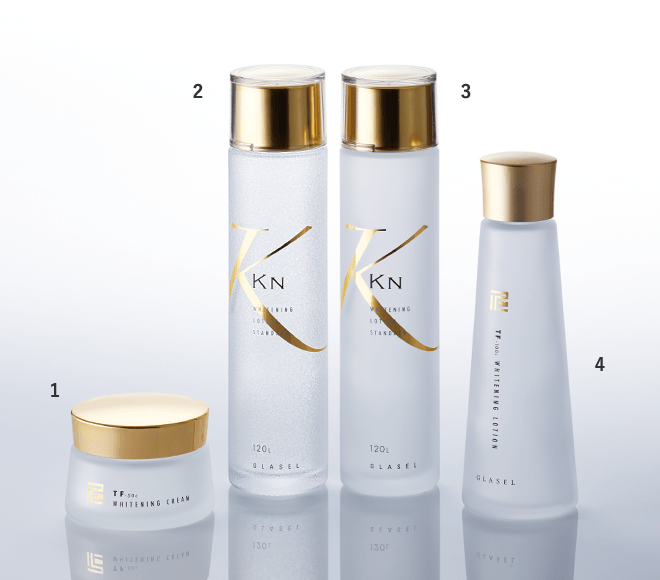
- 1. TF-50C(frost, silk screen printing , hot stamping )+ SC-60C(vacuum metalized)
- 2. KN-120L(imbricated process frost, silk screen printing , hot stamping )+CL-43Φ(Inner cap:vacuum metalized/Outer cap:natural color )
- 3. N-120L(special frost, silk screen printing, hot stamping )+ CL-43Φ(Inner cap:vacuum metalized/Outer cap:natural color )
- 4. TF-100L(frost, silk screen printing , hot stamping )+ SC-L(vacuum metalized )